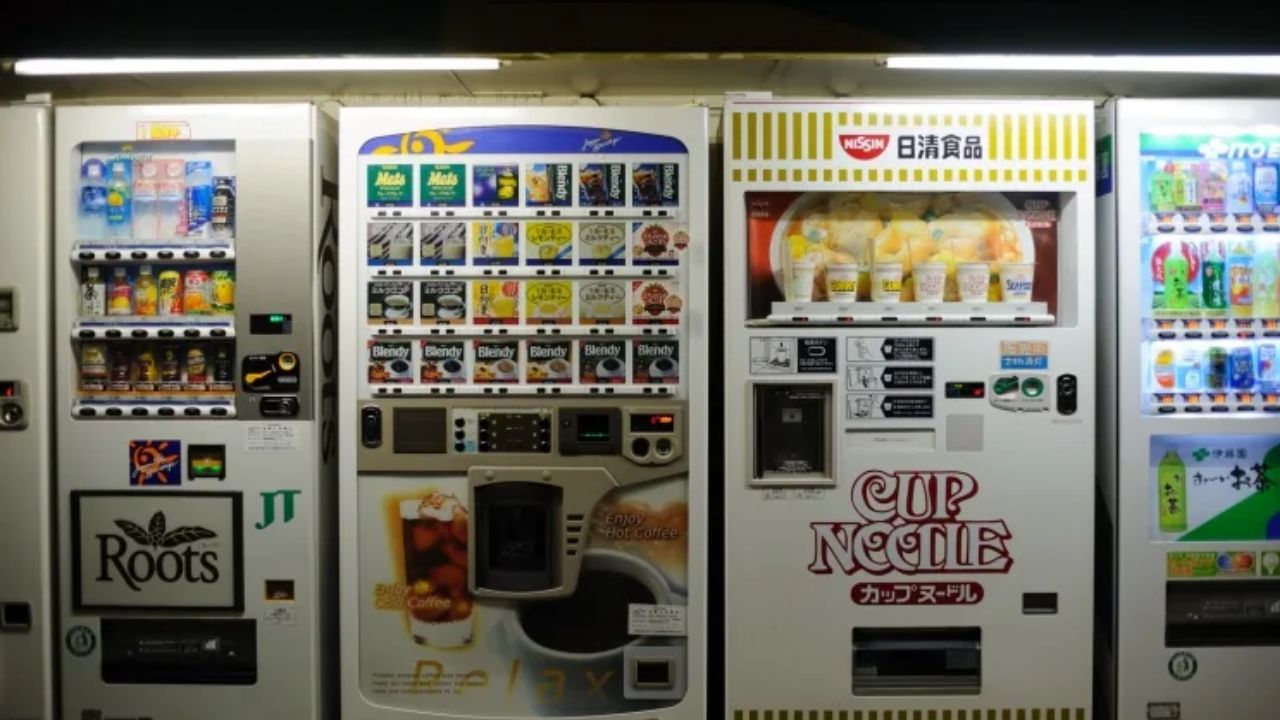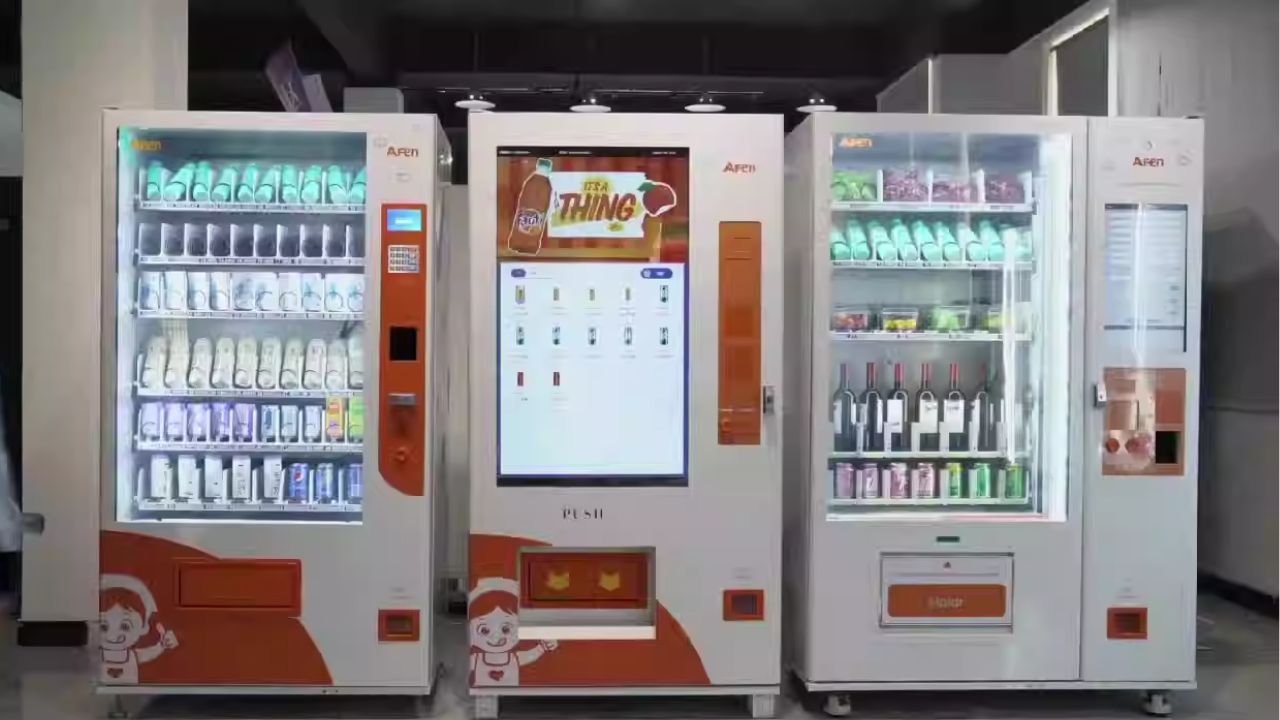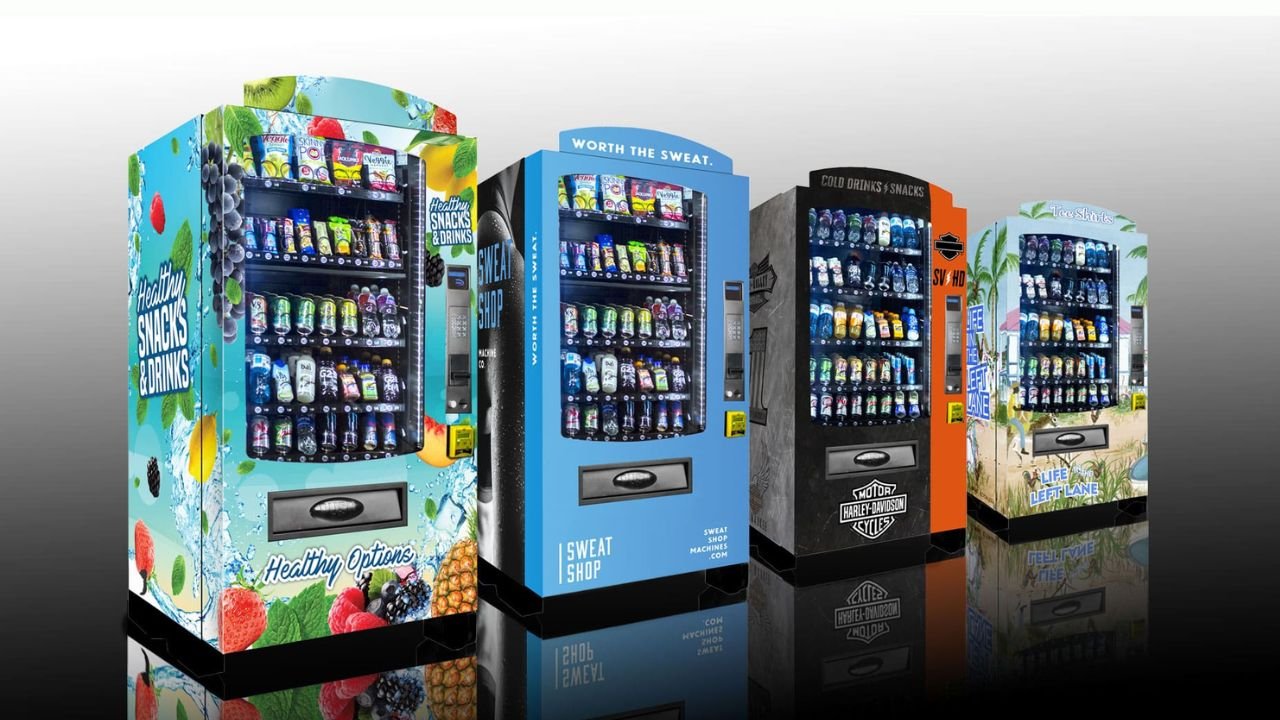A vending machine’s price can be changed easily, although it requires attention to detail. Locate the vending machine’s control panel, typically inside or behind a panel. Some vending machines have digital interfaces, while others may use physical buttons or dials. Access the pricing settings through the control panel menu. When in doubt, refer to the machine’s manual or the manufacturer’s instructions.
Once in the pricing menu, input the new price per item using the keypad or adjust the price with the buttons or dials provided. Ensure that the new price is accurately entered to avoid any discrepancies. After confirming the new price, exit the pricing menu and test the machine to verify that the changes have been applied correctly.
Additionally, updating any pricing information displayed on the machine is important for customer transparency. Remember to document any price changes for record-keeping purposes. Regularly review and adjust pricing to reflect cost changes or market demand. With attention to detail and proper procedure, changing the price of a vending machine can be efficiently accomplished.
Accessing the Vending Machine Control Panel
Accessing the vending machine control panel is the first step in managing its settings efficiently. Typically located within the machine or behind a secure panel, the control panel is the nerve center for adjusting various parameters, including pricing, inventory tracking, and diagnostic information.
Depending on the type of vending machine, the control panel interface may have conventional buttons and dials or digital touchscreens. Find the access point that the manufacturer has designated in order to gain access to the control panel. This might involve unlocking a compartment or removing a panel secured with screws or clips. Once inside, familiarize yourself with the layout and functions of the control panel. Navigate the menu options for the desired settings, such as pricing adjustments.
Always follow manufacturer instructions or refer to the vending machine manual for guidance on accessing and navigating the control panel. Taking care when accessing the control panel ensures proper maintenance and allows for seamless management of the vending machine’s operations.
Navigating the Pricing Settings Menu
Navigating the pricing settings menu on a vending machine is pivotal for accurately adjusting product costs and maintaining profitability. Begin by accessing the control panel inside the machine or behind a secure panel. Once accessed, navigate through the menu options to find the pricing settings. Depending on the vending machine model, the interface may feature digital touchscreens, buttons, or dials.
Within the pricing settings menu, you’ll typically find options to modify the price per item or adjust pricing tiers. Input the new prices using the keypad or adjust them using the provided controls. Ensure precision in entering the prices to prevent any discrepancies. Some advanced vending machines may offer additional features, such as setting promotional prices or scheduling price changes for specific times. Familiarize yourself with the menu layout and functions to navigate efficiently.
Consult the vending machine manual or follow manufacturer instructions for guidance. Testing the changes after adjustment is crucial to confirm their accuracy. Navigating the pricing settings menu ensures that your vending machine reflects current market conditions and maximizes profitability.
Selecting the Product for Price Adjustment
Selecting a product for price adjustment on a vending machine involves identifying items whose prices need to be modified to align with market demand or cost changes. Access the vending machine’s control panel inside or behind a secure panel.
Navigate through the menu options to access the pricing settings. Once in the pricing settings menu, locate the option to select individual products or categories for adjustment. Depending on the vending machine model, this may involve scrolling through a list of available products or categories using buttons, touchscreens, or a keypad. Carefully choose the product or category you wish to adjust, considering popularity, profitability, and external market influences.
Input the new price for the selected item or items using the keypad or adjust them using the provided controls. After making the necessary adjustments, test the vending machine to confirm that the changes have been applied accurately. By selecting the product for price adjustment thoughtfully, you can optimize sales and profitability in your vending business.
Inputting the Desired Price Change
Inputting the desired price change on a vending machine is crucial in ensuring accurate adjustments to product costs. Once you’ve accessed the pricing settings menu through the control panel, navigate to the specific product or category requiring a price change. Using the keypad or controls provided, input the new price for the selected item or items.
Take care to enter the price accurately to avoid any discrepancies that could affect sales or profitability. Some vending machines may allow incremental adjustments, while others require entering the exact price. Consider market demand, product popularity, and cost fluctuations when determining the desired price change. Finding the right mix between competitive pricing and sustaining profitability is crucial.
Confirm the changes after inputting the new prices and exiting the pricing settings menu. Test the vending machine to ensure the adjustments have been applied correctly and that products are dispensed at the updated prices. Review pricing tactics frequently and make necessary adjustments to maximize income potential and adjust to shifting market conditions. By inputting the desired price change accurately, you can effectively manage product costs and optimize sales in your vending business.
Confirming Price Adjustment
Confirming price adjustments on a vending machine is critical to ensure that changes have been accurately applied and that products are dispensed at the updated prices. After inputting the desired price change through the control panel, carefully review the adjustments made. Verify that the new prices have been entered correctly, considering market demand, profitability, and cost fluctuations.
Double-check the pricing settings menu to ensure that all changes are reflected accurately. Once you are satisfied with the adjustments, confirm the changes within the vending machine’s interface. Depending on the specific model, this may involve selecting a “confirm” or “save” option. After confirmation, conduct a test run of the vending machine to ensure that products are dispensed at the updated prices.
Purchase items from the machine and verify that the correct prices are displayed and charged. Regularly monitor the vending machine’s performance to ensure that price adjustments are effectively implemented and continue to meet business objectives. By confirming price adjustments diligently, you can maintain accurate pricing and optimize profitability in your vending business.

Testing Price Change Functionality
Testing price change functionality on a vending machine is crucial to ensure adjustments are accurately implemented and that products are dispensed at updated prices. After inputting the desired price changes through the control panel, initiate a test run of the vending machine.
Select various products from the machine to verify that they are dispensed at the new prices. Carefully observe the pricing display to confirm that it reflects the updated costs accurately. Test different payment methods, such as cash or card, to ensure the vending machine correctly charges customers the revised prices.
Conduct multiple transactions across different products to thoroughly assess the functionality of the price change adjustments. If any discrepancies are detected during testing, revisit the pricing settings menu to rectify the issue and ensure accurate pricing.
Test the vending machine’s price change functionality regularly to maintain reliability and customer satisfaction. By rigorously testing price changes, you can uphold pricing accuracy and optimize revenue generation in your vending business.
Setting Price Tiers for Different Products
Setting price tiers for different products in a vending machine allows for strategic pricing strategies tailored to varying factors such as product popularity, cost, and consumer preferences. Access the vending machine’s control panel and navigate the pricing settings menu. Within the pricing settings menu, locate the option to set price tiers or individual prices for specific products or categories.
Depending on the vending machine model, this may involve selecting products from a list or categories using buttons, touchscreens, or a keypad. Consider factors such as product demand, profitability, and market trends when determining the price tiers for different items. Set higher prices for premium or niche products and lower prices for more commonly purchased items to maximize sales and profitability.
After setting the price tiers for different products, confirm the changes and conduct thorough testing to ensure accurate pricing implementation. Regularly review and adjust price tiers to adapt to changing market conditions and optimize revenue generation in your vending business.
Implementing Bulk Pricing Options
Implementing bulk pricing options in a vending machine can incentivize larger purchases and increase customer satisfaction. Access the vending machine’s control panel and navigate the pricing settings menu. Within the pricing settings menu, locate the option to set bulk pricing for specific products or categories.
Depending on the vending machine model, this may involve selecting products individually or applying bulk pricing to entire categories. When determining the bulk pricing options, consider factors such as product popularity, profit margins, and customer buying habits. Offer discounts or reduced prices for multiple items, encouraging customers to buy more and increasing overall sales volume.
Input the bulk pricing options accurately, ensuring that the discounts are applied correctly based on the quantity purchased. Confirm the changes and conduct thorough testing to verify that the bulk pricing options are implemented as intended. Regularly review and adjust bulk pricing options to remain competitive and maximize revenue in your vending business. Offering attractive bulk pricing incentives can enhance customer loyalty and drive increased sales volume.

Considering External Factors in Pricing Decisions
When making pricing decisions for a vending machine, external factors influencing profitability and customer satisfaction must be considered. Start by analyzing market trends, including changes in consumer demand, competitor pricing, and economic conditions.
Additionally, factor in product procurement, maintenance, and overhead expenses. Take into account location-specific variables like foot traffic, demographics, and seasonality, as these can impact sales and pricing strategies.
For instance, higher-foot-traffic areas may support slightly higher prices, while lower-income neighborhoods might benefit from more affordable options. Moreover, consider customer feedback to gauge their willingness to pay and adjust prices accordingly. Offering promotions, discounts, or loyalty programs can attract and retain customers.
Regularly monitor and adjust pricing strategies based on the evolving external landscape to stay competitive and maximize revenue. By carefully considering external factors in pricing decisions, you can optimize profitability and enhance the overall customer experience in your vending business.
Implementing Price Locks for Stability
Implementing price locks for stability in a vending machine ensures consistency and reliability in pricing, benefiting both the business and customers. Access the vending machine’s control panel and navigate the pricing settings menu.
Find the “Activate Price Locks” option in the pricing options menu. Price locks prevent price swings caused by outside variables like shifting market dynamics or rivals’ pricing. By enabling price locks, you can maintain stable prices for an extended period, provide customer predictability, and simplify operational management.
This stability fosters trust and loyalty among customers who appreciate consistent pricing. Consider factors such as product popularity, cost fluctuations, and customer feedback when determining the duration for price locks. Regularly review and adjust price locks to remain competitive and responsive to market dynamics. By implementing price locks for stability, you can streamline pricing management, enhance customer satisfaction, and promote long-term success in your vending business.
Training Staff on Price Adjustment Procedures
Training staff on price adjustment procedures is crucial for ensuring smooth and accurate operations in a vending business. Start by providing comprehensive instructions on accessing the vending machine’s control panel and navigating the pricing settings menu.
Educate staff on the factors influencing pricing decisions, such as market demand, cost fluctuations, and competitor pricing. Emphasize the importance of maintaining consistency and accuracy in price adjustments to uphold customer trust and satisfaction. Demonstrate how to input desired price changes, confirm adjustments, and conduct thorough testing to verify pricing accuracy.
Additionally, train staff on troubleshooting common issues related to price adjustments and how to resolve them effectively. Encourage open communication and feedback from staff regarding pricing strategies and customer responses to price changes. Review and update training materials frequently to reflect modifications to vending machine technology or pricing policies. By adequately training staff on price adjustment procedures, you empower them to contribute to the success of the vending business and deliver exceptional service to customers.
Conclusion
A vending machine’s pricing change requires careful testing, strategic decision-making, and attention to detail. Beginning with accessing the vending machine’s control panel, operators navigate through pricing settings menus to accurately input desired price adjustments.
These decisions inform these decisions by considering factors such as market demand, cost fluctuations, and customer preferences. Thorough testing of price changes ensures accurate implementation and confirms that products are dispensed at the updated prices. Additionally, strategies such as price locks for stability and offering bulk pricing options can enhance profitability and customer satisfaction.
Training staff on price adjustment procedures is essential for maintaining consistency and accuracy in pricing operations. By carefully managing price changes and considering external factors, vending machine operators can optimize revenue generation and foster long-term business success.
FAQ
How do I change the price of my vending machine?
To change the price of your vending machine, access the control panel, typically located inside the machine. Use the manufacturer’s instructions to navigate to the pricing settings menu.
Can I adjust prices for specific products?
Yes, most vending machines allow you to adjust prices for specific products or categories. To do so, navigate to the product selection within the pricing settings menu and input the desired price changes.
What factors should I consider when changing prices?
Consider market demand, cost fluctuations, competitor pricing, and customer feedback. Price changes should align with your business goals and maintain profitability.
How do I confirm that price changes are accurate?
After inputting the new prices, conduct thorough testing by purchasing items from the vending machine. Verify that the products are dispensed at the updated prices and that the pricing display reflects the changes correctly.
Is there a way to ensure price stability?
Some vending machines offer features like price locks, which prevent price fluctuations. Activate price locks to maintain stable prices for an extended period, providing customer predictability and simplifying operational management.


